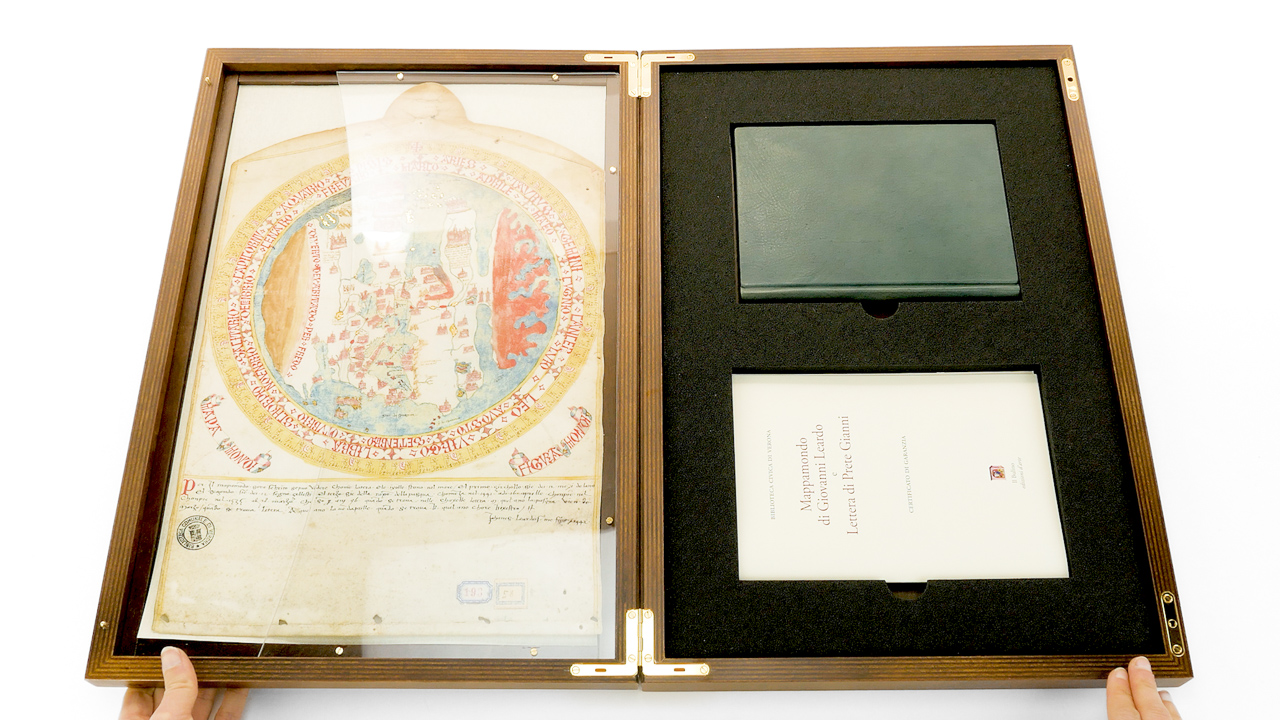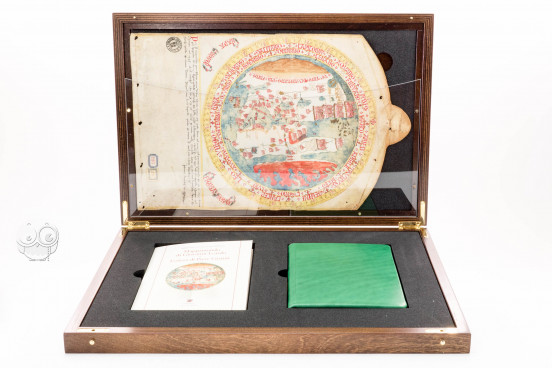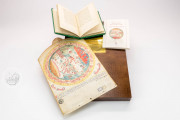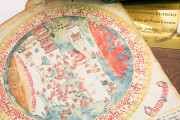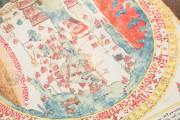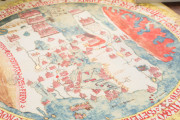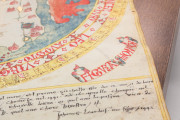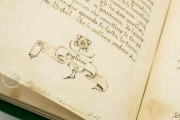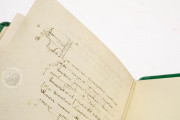This collection comprises two items: the world map made by the Venetian cartographer Giovanni Leardo in 1442 and a fifteenth-century manuscript of an Italian translation of the letter of the mythical Prester John addressed to the Byzantine emperor. The map—its text in Venetian dialect—was presumably created in Venice, where Leardo made his career. The manuscript of Prester John's letter is presumed to have been copied in Verona, where it has been recorded since the century of its writing. The map and manuscript, both now in the collection of the Biblioteca Civica di Verona, attest in different ways to the fifteenth-century Italian fascination with the world beyond the Mediterranean.
The letter of Prester John, the supposed ruler of a mythical Christian kingdom located first in the East and later in Ethiopia, first circulated in Latin in the second half of the twelfth century. It was translated into many European vernaculars, its text continually updated to accord with evolving understandings of the location of John's kingdom
Between Tradition and Modernity
Oriented with east at the top, the map depicts the three continents known to Europeans at the time: Asia (on the upper half of the map), Europe (on the left side), and Africa (on the right side), following the medieval cartographic tradition. Nevertheless, some of the map's details reflect post-medieval understandings of lands distant from Europe occasioned by contemporary travels.
The map contains abundant cityscapes representing various polities and geographic areas. Jerusalem—represented by a church building—is shown at the center of the map. The largest cityscapes are in Asia. Consistent with the map's Christian worldview, the terrestrial paradise, depicted as a large city, is located at the eastern edge of the world, beyond India. The largest polity in Africa is the Impero del presto iani ("the empire of Prester John").
The World Surrounded by a Calendar
Surrounding the world map, three concentric bands contain text: the first one contains a listing of the months, the second one the signs of the zodiac, and the outer one the dates of Easter from 1441 to 1535. The inscription at the bottom of the map, written by Leardo in Mercantesca script, describes this content. He signed and dated his work in the voice of the map: "Giovanni Leardo made me, 1442."
An Idyllic Land
The Letter of Prester John describes his kingdom as a place of riches and wondrous creatures where no poisons are found, a kind of Christian utopia that stirred the imagination of Europeans.
Written in Humanistic Minuscule
The text of Prester John's letter is a small, handsome volume written by a single scribe in Humanistic Minuscule. The manuscript's history is entirely Veronese. In the fifteenth and sixteenth centuries, it was owned successively by Galeazzo Canossa and Paolo Canossa. The latter added a prayer to the Virgin Mary on the last leaf. It then passed through the hands of Giulio Saibanti and entered the library of Paolino Gianfilippi (1745-1827), which came to the Biblioteca Civica in 1846.
We have 1 facsimile edition of the manuscript "Giovanni Leardo Mappamundi and Letter of Prester John (Collection)": Mappamondo di Giovanni Leardo e Lettera del Prete Gianni facsimile edition, published by Il Bulino, edizioni d'arte, 2015
Request Info / Price
